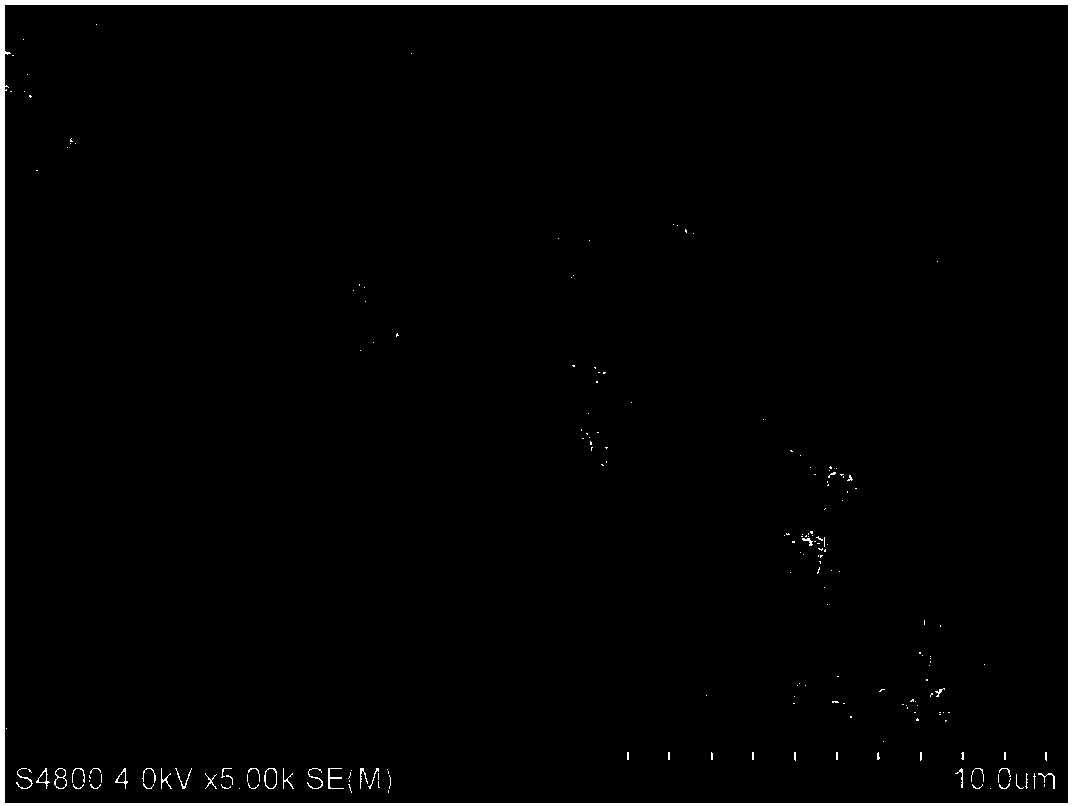A preparation method for constructing superhydrophobic interface of polylactic acid film based on stereocomplex crystal
A technology of polylactic acid film and stereocomposition, applied in the field of bionic interface, can solve the problems of not achieving high and low adhesion, expensive, limited to small size, etc.
- Summary
- Abstract
- Description
- Claims
- Application Information
AI Technical Summary
Problems solved by technology
Method used
Image
Examples
Embodiment 1
[0024] Step (1). Dissolve 9.6 g of L-polylactic acid and 6.4 g of D-polylactic acid (16 g in total) in 84 g of methylpyrrolidone, and stir at 80° C. for 12 h at a stirring speed of 200 rpm to obtain a uniform initial casting solution;
[0025] Step (2). Vacuum and defoaming the obtained initial film casting solution, then pour it on a clean and clean ground glass surface, scrape it with a scraper to make a 100 μm thick primary film, and immerse the primary film in 25°C coagulation bath pure water within 10s , immersed for 10min to fully precipitate the polylactic acid;
[0026] Step (3). The fully cured polylactic acid film in step (2) is peeled off from the ground glass, soaked in deionized water for 24h, the residual solvent is removed, and then air-dried for later use;
[0027] The polylactic acid film obtained under this condition has a hydrophobic contact angle of 148o on the side in contact with the glass plate, and the adhesion to water droplets is 140μN.
[0028] The ...
Embodiment 2
[0030] Step (1). Dissolve 12.6g L-polylactic acid and 5.4g D-polylactic acid (18g in total) in 82g dimethylacetamide, stir at 85°C for 14h, and the stirring speed is 120rpm to obtain a uniform initial cast film liquid;
[0031] Step (2). Vacuuming and defoaming the obtained initial film casting solution, then pouring it on a clean and clean ground glass surface, scraping with a scraper to make a 200 μm thick primary film, and immersing the primary film in a coagulation bath at 15°C within 10s, The coagulation bath is a mixture of water / methylpyrrolidone, with a volume ratio of 9:1, and immersed for 35 minutes to fully precipitate the polylactic acid;
[0032] Step (3). The fully cured polylactic acid film in step (2) is peeled off from the ground glass, soaked in deionized water for 24h, the residual solvent is removed, and then air-dried for later use;
[0033] The polylactic acid film obtained under this condition has a hydrophobic contact angle of 149o on the side in conta...
Embodiment 3
[0035] Step (1). Dissolve 14.4g L-polylactic acid and 3.6g D-polylactic acid (18g in total) in 82g methylpyrrolidone / dimethylacetamide mixed solvent, stir at 75°C for 8h, and the stirring speed is 220rpm, Obtain a uniform initial casting solution;
[0036] Step (2). Vacuuming and defoaming the obtained initial film casting solution, then pouring it onto a clean and clean ground glass surface, scraping with a scraper to make a 300 μm thick primary film, immersing the primary film in a coagulation bath at 28°C within 10s, The coagulation bath is a mixture of water / methylpyrrolidone, with a volume ratio of 8:2, and immersed for 40 minutes to fully precipitate the polylactic acid;
[0037] Step (3). The fully cured polylactic acid film in step (2) is peeled off from the ground glass, soaked in deionized water for 24h, the residual solvent is removed, and then air-dried for later use;
[0038] The polylactic acid film obtained under this condition had a hydrophobic contact angle o...
PUM
| Property | Measurement | Unit |
|---|---|---|
| thickness | aaaaa | aaaaa |
| thickness | aaaaa | aaaaa |
| thickness | aaaaa | aaaaa |
Abstract
Description
Claims
Application Information
 Login to View More
Login to View More - R&D
- Intellectual Property
- Life Sciences
- Materials
- Tech Scout
- Unparalleled Data Quality
- Higher Quality Content
- 60% Fewer Hallucinations
Browse by: Latest US Patents, China's latest patents, Technical Efficacy Thesaurus, Application Domain, Technology Topic, Popular Technical Reports.
© 2025 PatSnap. All rights reserved.Legal|Privacy policy|Modern Slavery Act Transparency Statement|Sitemap|About US| Contact US: help@patsnap.com

